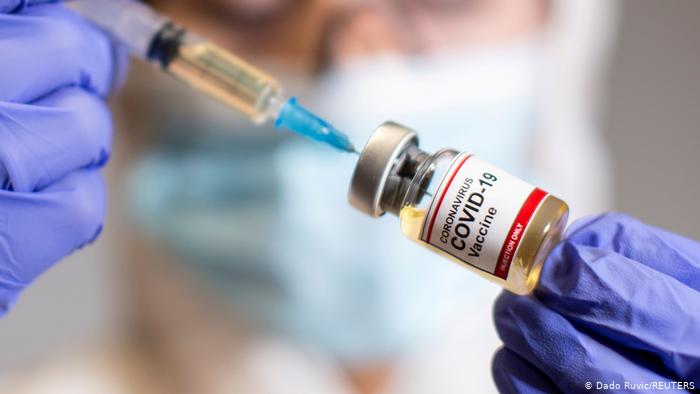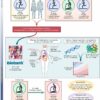By now, more than 5.1 million people across 22 countries have been given a dose of one of several COVID-19 vaccines independently sanctioned by national authorities.
Putting aside China’s and Russia’s early administration of their own vaccines, achieving such a wide reach in just a few weeks across so many nations is an encouraging sign of what might be achieved in coming months.
While it’s tempting to think of this as the end-game of the worst pandemic humanity has seen in generations, vaccination is a team sport. And that clock is still ticking, folks.
Here’s the winning strategy for the game’s next half.
I haven’t had a vaccine yet. What should I expect?
As is the case with any vaccine, stimulating the body’s immune system comes with it a risk of unwanted side effects. In the very least, this is likely to include tenderness at the site of injection that is at its worst a day or so after vaccination.
Your body will also mount a rather lacklustre fever response as if you’re getting sick. This could include aching joints, a headache, and lethargy.
While you might feel warm, an actual temperature isn’t on the cards – if your thermometer climbs to fever-pitch, you might have some other infection. None of these symptoms should last more than a week, either. In either case, these side effects might warrant a chat with your family doctor.
In several cases, the Pfizer-BioNTech vaccine has been found to produce an anaphylactic response in individuals who have existing sensitivities to materials in the vaccine. It’s looking like an exceedingly rare reaction, but worth keeping in mind.
If you’re at all concerned about allergies, or any side effects, your family doctor can sort those worries out for you as well.
I’ve had my first of two doses of the Pfizer vaccine. Is there a chance I’m immune to COVID-19 now?
There is. But this might not mean what you think it means.
Clinical evidence from the Pfizer-BioNTech vaccine trials suggested there was a strong degree of protection against COVID-19 around 10 days after the first of two doses, equalling around 52 percent.
The figures are based on a comparison of COVID-19 cases among more than 44,000 volunteers earlier this year. In total, 82 volunteers presented with COVID-19 symptoms after receiving a single placebo jab, compared with 39 who got a single vaccine dose.
While well short of the 92 percent provided by two doses, it’s still a solid gamble, right?
This is where it’s important to know the difference between COVID-19 – the disease – and SARS-CoV-2 – the virus.
Even in light of such positive clinical results, there’s a distinct possibility that the virus can still invade surface-layer tissues in your nasal cavity and reproduce before the immune system gets wind of its presence and kicks it out.
A brief stopover in your mucosal membrane may not be long enough to generate COVID-19 symptoms in the rest of your body, but it might be just enough time for the virus to pump out a quick generation or two and be on its way to a new host on the next sneeze.
This means we don’t know how easy it will be for SARS-CoV-2 to fly under the radar and continue to spread through milder asymptomatic cases.
Can I stop wearing a mask after receiving both of my vaccine doses?
Hold onto that mask. They’re not about to go out of fashion any time soon.
Researchers might be confident that these vaccines will reduce a population’s susceptibility to the disease COVID-19, but as outlined above, we have little reason to think it will leave the virus nowhere to hide.
As more people become vaccinated, we can hope that fewer individuals will end up in hospital. Or worse, in the morgue. Saving lives should be considered a primary goal of the vaccination program.
Eliminating the virus would be a welcome consequence of vaccinating an entire population. But there simply isn’t enough evidence that vaccines will do this, at least not yet.
Until then, masks are one action we can all take that certainly makes a difference.
Need more reasons? Making masks fashionable is a cultural obligation. You might not think of yourself as any great trendsetter, but this is one case where some peer pressure will save lives.
Do it for the team.
Do I still need to go into quarantine if I’ve had both of my vaccine doses?
For the same reason we need to hold onto our masks after receiving vaccines, we must also continue to adhere to strict isolation and quarantine procedures.
Having immunity to COVID-19 isn’t the same as being clear of SARS-CoV-2, and quarantine is still one of our most effective means of keeping communities free of those virus particles.
“I think until we know more, we need to assume that people who have been vaccinated also need to take the same precautions until there is a certain level of herd immunity that’s been built in the population,” World Health Organisation chief scientist Soumya Swaminathan advised recently.
When will we hit that level of herd immunity through vaccination?
Unfortunately this is one of those big questions with no simple answer.
There’s no denying we’re off to a flying start. Still, a community can only be confident that the virus will be locally eradicated if around 70 percent of its population is immune for a period long enough to prevent its ongoing replication.
The first stages of the rollout will be easy compared to reaching those who are isolated, doubtful, or downright opposed to being vaccinated.
Will we need booster shots in the future?
The most recent studies on just how long our body can remember encounters with SARS-CoV-2 infections suggest we’re good for at least eight months. Optimistically, we might expect possible future studies might show this immunity lasts a year, if not several.
This bodes well for vaccination programs, which will take time to deliver both doses to a country’s population. But at some point, bodies have a habit of losing track of the cells that preserve those antibody reminder notices.
Whether we’ll all need another round of shots is impossible to say. But when the time comes, there’s one thing we can’t forget – the loss of lives, health, and livelihoods caused by the spread of a virus nobody had even heard of before January 2020.



